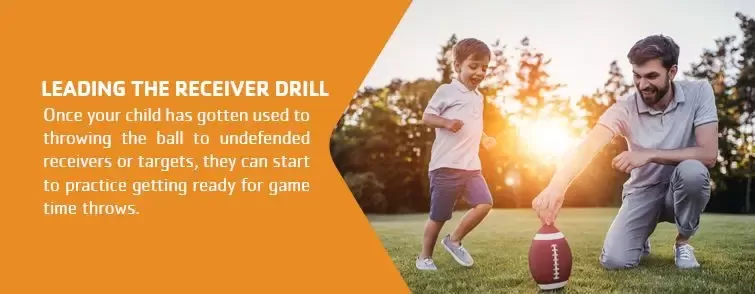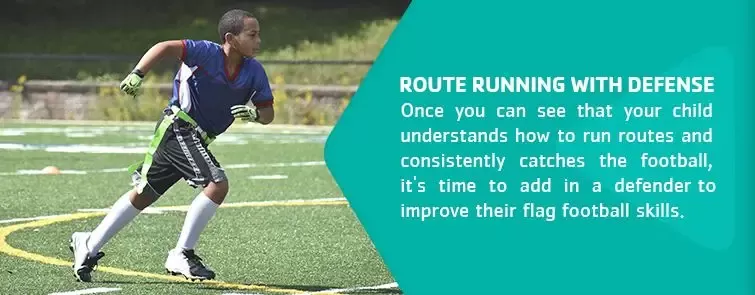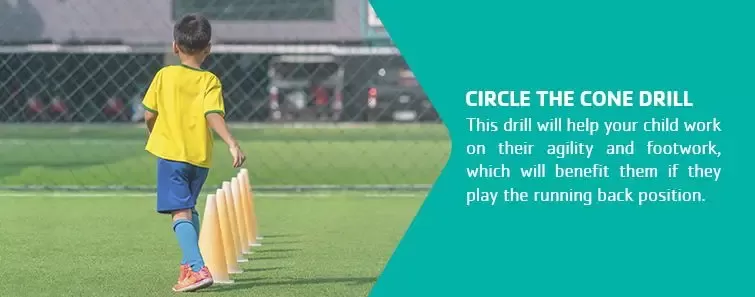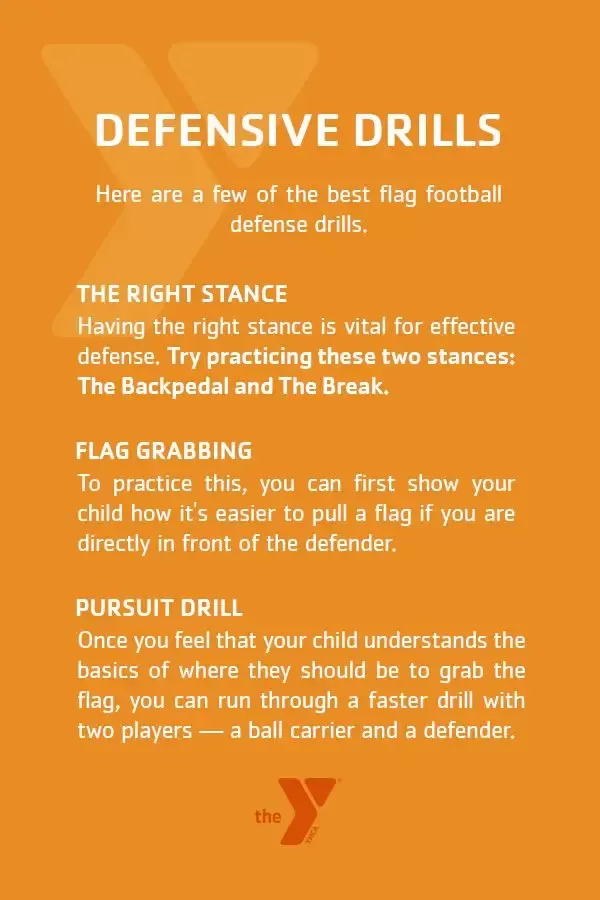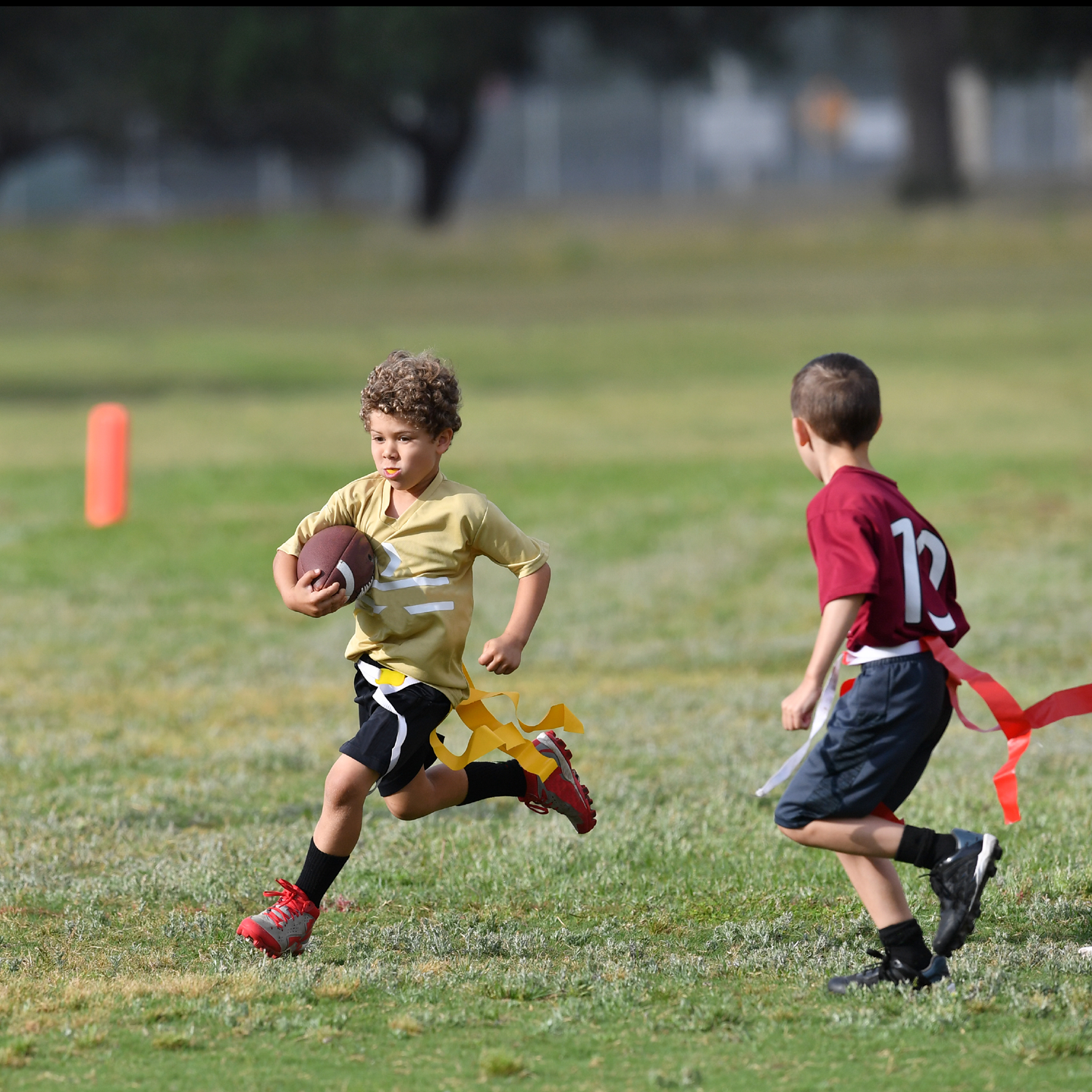
With football season fast approaching, your child might be showing an interest in playing pee wee or youth football this year. It can be challenging to feel comfortable allowing your child to play, given the health risks of youth tackle football. Luckily, flag football offers a much safer option than tackle football, while still letting your child have all the fun that comes with the game.
A great way to get your child excited and ready for the flag football season is to get them started practicing youth flag football drills. These drills can help your child hone their skills and can be an excellent way for them to have a good time with their friends after an adult shows them how to run through the drills correctly.
If you don't know how to help your child get better at flag football or are looking for good flag football drills, then you've come to the right place. We've compiled some of the best flag football drills below so your child can reach their highest potential, all while staying safe and having a great time!
Passing Drills
The quarterback is arguably one of the most critical players on the field, as every offensive play runs through them. They get the ball snapped to them, they hand it off to their running back, they can run the ball themselves, and, most importantly, they pass the ball to their teammates.
Since the quarterback position is so popular, most kids will at some point want to try to their hand at the position. As such, passing drills help players get used to the primary responsibility of the quarterback — throwing accurate passes.
1. Passing Accuracy Exercise
One simple drill that you can do in the comfort of your backyard is to set up cones around the yard at varying distances. If you don't have access to cones around your house, feel free to use anything that you wouldn't mind getting hit by a football as a target. Once the targets are all set up, have your child practice throwing the ball at them with the aim of hitting them.
This drill will help players get used to throwing the ball in a low-pressure situation and develop their pass accuracy. The great part of this exercise is that it allows players to practice on their own time without the need of anyone else.
If you notice that your child is struggling to hit the targets, and the ball is wobbling in the air, check to see if they're lining their fingers up with the laces on the football. Making sure that their fingers are lined up with the laces is key to making sure the ball comes out of their hand in a spiral and goes to where they are trying to throw it. Learning how to throw a football with the correct form will make their passes more accurate and reduce the risk of injury.
2. Two Line Passing Drill
In this five- to 10-minute warm-up drill that trains a player's passing and catching abilities, all you need to do is have your child and a friend line up across from each other to throw a football back and forth. After the players get used to throwing the ball to each other, which usually only takes a couple of minutes, have one side take a few steps back to increase the difficulty. Repeat this process, and finish the drill after about 10 minutes.
This drill is incredibly flexible and can be done with only two people or a whole group of kids. One way that you could have fun with your child in this warm-up is to see how many consecutive passes you both can throw without dropping the ball while getting farther and farther away. The draw of setting a new record will keep your child engaged in the drill.
3. Leading the Receiver Drill
Once your child has gotten used to throwing the ball to undefended receivers or targets, they can start to practice getting ready for game time throws. In this drill, the child will learn how to throw the ball to an area rather than directly to the receiver. Often, players will be too carefully guarded to throw the ball straight towards them, so learning how to aim the ball slightly ahead of the receiver while they're running a route is crucial.
To set up this drill, place two cones on the ground down the field with a few feet between them. The receiver will aim for the area between the cones, usually running a slant or out-route to get there, and the quarterback should throw the ball to the space between the cones before the receiver gets there. The drill aims to teach the quarterback to lead the receiver to the ball and work on proper timing.
Once the quarterback and receiver get their timing down and are consistently connecting, you can increase the difficulty by adding a defender to the mix. The defender will better simulate what a game will be like and add a new element of challenge to the drill. If you notice that the defender is starting to break up a lot of the passes because they know the receiver and the football are always going to one area, you can add a second set of cones down the field, so that the offensive players have another option to go to.
Route Running Drills
Flag football often relies more heavily on passing than running, as there are not as many blockers at the line of scrimmage to create space for a running back like in tackle football. Due to this emphasis on receiving, it's crucial that your child works on their ability to catch the ball and run routes. Many of the flag football passing drills mentioned previously can be used to help your child get better at catching the football if you switch roles — you can play the quarterback while they play the receiver.
1. The Basics of Route Running
Being able to catch the football isn't the only part of being a good receiver. Another essential part of being a great receiver is getting open. Learning how to run routes can help your child learn how to create enough space for the quarterback to throw the ball to them. Below are some common routes used in flag football:
- Curl route: In a curl route, a player runs straight for a set amount of yards and then turns around on a dime to the catch the ball.
- Out route: Again, a player will run in a straight line for a predetermined set of yards, but instead of turning around, they turn at a 90-degree angle towards the sideline.
- Deep route: Also called the "go route," this is one of the easiest routes to remember. The player runs in a straight line for 10 or more yards as they try to beat their defender and get open.
- Slant route: A receiver should only take two steps from the line of scrimmage and then cut at a 45-degree angle across the field.
To begin practicing these routes, have your child run them on their own without anyone passing them the ball. Pay attention to their footwork as they make their cut. For instance, if a player is supposed to go left on a slant route, they should cut off of their right foot.
After your child gets a good feel for the routes and can run them comfortably with the correct form, have yourself or one of their friends start throwing passes to them. Combining the route running with a football to catch will get them ready for a game.
2. Route Running With Defense
Once you can see that your child understands how to run routes and consistently catches the football, it's time to add in a defender to improve their flag football skills. You will need at least three players for this drill — a quarterback, receiver and defender.
To set up the drill, have the players line up like they were in a game, with the defender directly across from the receiver. The quarterback should decide what routes the receiver should run and communicate it to them. If you want to make the drill even more game-like, add more receivers and defenders to the exercise so that players can get used to having multiple people on the field.
Rushing Drills
Becoming a better runner is key to multiple positions in flag football. Also, the running back position can be used to gain yardage effectively. While some people are more agile and fast than others, everyone can benefit from practicing running drills.
1. Circle the Cone Drill
This drill will help your child work on their agility and footwork, which will benefit them if they play the running back position, but also in any position that values speed and quickness. This is another backyard drill that doesn't require anyone but the player — and maybe a parent or friend for moral support! To set up this drill, have three cones lined up in a straight pattern, leaving about 5 yards in between them.
Next, have your child run to the first cone and do a complete circle around it before rushing to the second cone. At the second and third cones, they will repeat the same move. Once they get to the final cone, they can turn around and repeat the steps in the opposite direction, so they end the drill at where they started. To help your child get used to holding the football, you can have them carry the football as they run.
2. Handoff Drill
To begin to teach your child how to be an excellent running back, they need to know how to receive a handoff without fumbling. Have your quarterback practice handing off the ball to the rusher multiple times before taking it to the game or trying some more advanced drills. If you want to make it more like a game and get players some practice snapping the ball, you can also have your center snap the ball to the quarterback, before the quarterback hands it off to the rusher.
Defensive Drills
Though not always as glamorous, defense is vital to a team's success. Many flag football teams have players playing both offense and defense, so it's smart to practice on the opposite side of the ball. Here are a few of the best flag football defense drills.
1. The Right Stance
Having the right stance is vital for effective defense. Try practicing these two stances:
-
The Backpedal: If your child is likely to cover receivers, it's important that their stance lets them backpedal quickly. By keeping their feet no wider than shoulder width apart and staggered so that one of their foot's toes is behind their other foot's heel, their knees bent, with their shoulders down, they will be able to keep an eye on the receiver they're covering and keep up with them.
- The Break: If your child is likely to be rushing the quarterback or guarding the line of scrimmage for a run, they can put one foot in front of the other at the line of scrimmage and lean forward like a runner to help propel them forward and reach the quarterback quickly.
Have your child try each of these stances while running through other passing or receiving drills mentioned previously that use defensive players.
2. Flag Grabbing
Though it might seem instinctual for your child to want to try to grab at the flag with only one hand from the side or behind, teaching them to place themselves in front of the ball carrier gives them the best opportunity to grab the flag, as they can use both hands.
To practice this, you can first show your child how it's easier to pull a flag if you are directly in front of the defender. Walk them through a play in slow motion where they need to stop someone who is running the ball. Make both players freeze at the point of contact so that you can demonstrate how the defender should be using both hands to pull the flag.
3. Pursuit Drill
Once you feel that your child understands the basics of where they should be to grab the flag, you can run through a faster drill with two players — a ball carrier and a defender — by having them line up a few yards from each other. After placing four cones on the ground, have the ball carrier try to run through the cones and around the defender without getting their flag taken. The defender will have the opposite goal as they are trying to take one of the flags before the offensive player gets through the cones.
You should start the defender about 5 yards from the cones but at an angle. The player with the ball will start around 10 yards from the cones. This drill is an excellent way to work on a defender's ability to grab a flag in a one-on-one situation and provides a fun challenge for both players. You can even have players switch roles, so they both get to practice their defense.
Contact Your Local YMCA to Get Involved With a Fun Youth Flag Football League
If your child enjoys these drills and wants to use them in games, the Gateway Region YMCA would be happy to include them in our Youth Flag Football League. As an organization, we promise no tryouts, no getting cut and no bench warmers! Every child will play at least half the game, and our coaches will focus on making sure players are learning and having fun.
To get involved in your community, find a YMCA near you. Sign your child up for the next season of Youth Flag Football at for Gateway Region YMCA. We hope to connect with you soon!
